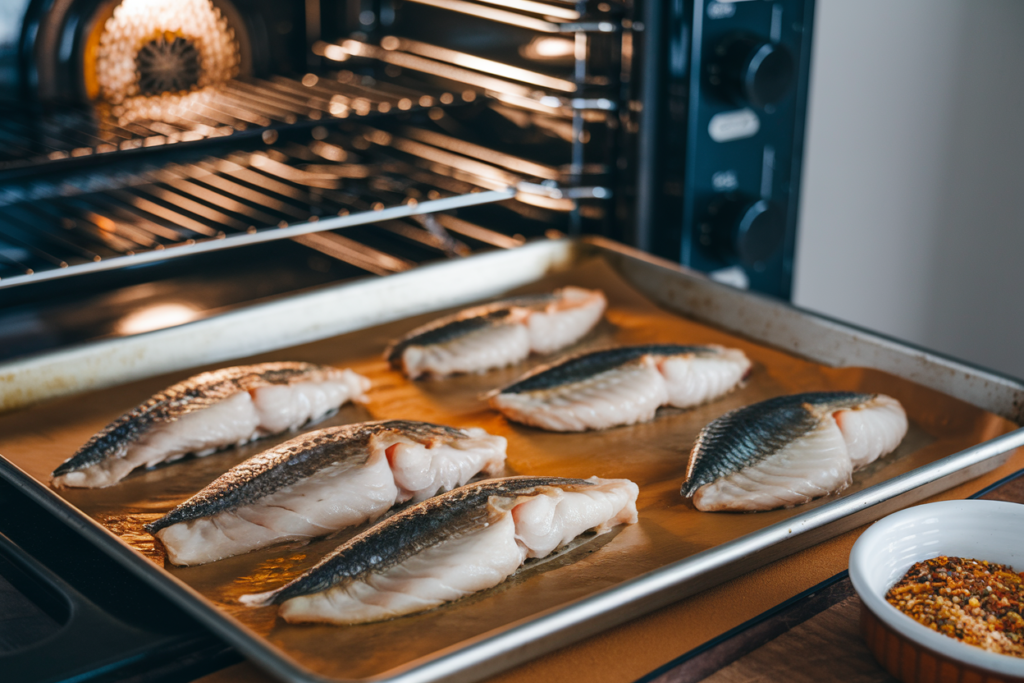When preparing tilapia, many home cooks wonder, “Do you soak tilapia in milk?” The answer is yes! Soaking tilapia in milk is a tried-and-true method to improve the fish’s texture and flavor. This technique neutralizes any fishy odor and enhances the overall taste, making it a popular choice for those who want a milder fish flavor. In this article, we’ll explore why milk soaking works, how to do it, and alternative methods that might suit your culinary needs. For additional tips on cooking fish, check out this detailed guide on cooking tilapia from Erin Recipes.
Soaking fish in milk is more than just a culinary trick; it’s backed by science. The enzymes and acids in milk help break down compounds responsible for the fishy smell, leaving you with a fresher-tasting fillet. This method isn’t just limited to tilapia—many chefs use it for other types of fish as well. For a deeper dive into why this method is effective, consider reading about why milk soaks work on The Cookie Rookie. Additionally, you can explore more recipes and techniques on our own blog at Erin Recipes.
Why Soak Tilapia in Milk?
Soaking tilapia in milk before cooking offers several advantages. The primary benefit is the neutralization of any strong, fishy odors, which can be off-putting to some. The milk’s proteins bind with the trimethylamine, the compound responsible for the fishy smell, effectively removing it from the fish. This process not only improves the smell but also enhances the flavor, making the fish more palatable, especially for those who might be sensitive to stronger fishy tastes.
Another benefit of soaking tilapia in milk is the improved texture. The lactic acid in milk can slightly tenderize the fish, making it more delicate and easier to cook. This is particularly useful if you’re planning to bake or grill the fish, as it helps maintain the fish’s moisture during cooking, preventing it from becoming dry or tough. The result is a tender, flaky tilapia fillet that is sure to impress your family or guests.
Beyond these practical benefits, soaking fish in milk is a method that has been passed down through generations. It’s a simple yet effective technique that requires minimal effort but delivers significant results. Whether you’re a seasoned cook or a beginner in the kitchen, this method is easy to incorporate into your fish preparation routine. For those who prefer alternative methods, the same effects can be achieved with other acidic ingredients like lemon juice or vinegar, though milk remains the most popular choice due to its mild flavor and tenderizing properties.
How to Soak Tilapia in Milk
Step-by-Step Guide
Soaking tilapia in milk is a straightforward process that anyone can do, regardless of their cooking experience. Here’s a detailed step-by-step guide:
- Select Your Milk: Choose whole or 2% milk for the best results. Skim milk may not be as effective due to its lower fat content.
- Prepare the Fish: Rinse the tilapia fillets under cold water and pat them dry with a paper towel.
- Soak the Fish: Pour enough milk into a large bowl to completely submerge the tilapia fillets. Let the fish soak for at least 20-30 minutes. Some cooks prefer to let the fish soak for up to an hour, depending on the thickness of the fillets and how much of the fishy odor needs to be neutralized.
- Drain and Dry: After soaking, remove the fillets from the milk and discard the milk. Pat the fillets dry with a paper towel before proceeding with your preferred cooking method.
- Cook Immediately: It’s best to cook the tilapia soon after soaking to preserve the improved texture and flavor. Choose from a variety of cooking methods like baking, grilling, or frying, all of which pair wonderfully with milk-soaked tilapia.
This method not only enhances the taste and texture of the tilapia but also prepares it perfectly for any type of cooking. Whether you’re preparing a delicate baked tilapia with herbs or a crispy, fried fillet, the milk soak will ensure your dish is a success.
Alternative Methods
While soaking tilapia in milk is highly effective, some may prefer to use other methods for various reasons, such as dietary restrictions or personal preferences. Here are a few alternatives to consider:
Lemon Juice: Lemon juice is a popular alternative that also helps to neutralize fishy odors. The acidity in the lemon juice works similarly to milk by breaking down the compounds that cause the smell. However, lemon juice also adds a fresh, citrusy flavor to the fish, which can be a welcome addition depending on the recipe.
Vinegar: Another alternative is white vinegar or apple cider vinegar. Vinegar is a stronger acid than lemon juice and can be even more effective at neutralizing odors. However, it’s important to dilute the vinegar with water to prevent it from overpowering the fish’s flavor. A mixture of one part vinegar to three parts water is usually sufficient.
Buttermilk: For those who still want the benefits of milk but with an added tangy flavor, buttermilk is an excellent choice. Buttermilk’s thicker consistency and slight acidity make it a good option for marinating tilapia, especially if you plan to fry the fish afterward. The buttermilk soak will add a subtle, tangy flavor to the fish, complementing the crispy exterior.
Each of these methods can be used as a substitute for milk, depending on your taste preferences and the type of dish you’re preparing. For example, lemon juice might be preferable for a light, summery dish, while buttermilk is ideal for Southern-style fried fish. Experiment with these alternatives to find the one that works best for your recipe.
Tips for Cooking Tilapia After Soaking
After soaking, tilapia can be cooked using a variety of methods, each offering a unique flavor and texture to the fish. Here are some tips for preparing tilapia after soaking:
Baking
Baking is a popular and healthy method for cooking tilapia. This method retains the fish’s moisture while allowing you to infuse it with various flavors through seasonings and marinades. Here’s how you can bake milk-soaked tilapia:
- Preheat the Oven: Set your oven to 400°F (200°C) for a quick bake that locks in moisture.
- Season the Fish: After soaking, season the tilapia fillets with salt, pepper, garlic powder, and a drizzle of olive oil. For a more flavorful dish, consider adding herbs like parsley, dill, or thyme.
- Bake: Place the seasoned fillets on a baking sheet lined with parchment paper or in a baking dish. Bake for 15-20 minutes, or until the fish is opaque and flakes easily with a fork.

This method is perfect for a light, healthy meal, and pairs well with side dishes like roasted vegetables, quinoa, or a fresh salad.
Grilling
Grilling gives tilapia a smoky flavor that is hard to replicate with other cooking methods. It’s an excellent choice for summer barbecues or for adding a bit of charred flavor to your dish. Here’s how to grill tilapia after soaking it in milk:
- Preheat the Grill: Heat your grill to medium-high heat (about 375-400°F). Ensure the grill grates are clean and lightly oiled to prevent sticking.
- Season and Oil the Fish: After soaking and drying the fillets, brush them with olive oil and season with your favorite oil, and season with your favorite spices. For a classic flavor, use salt, pepper, and a squeeze of fresh lemon juice. For a spicier version, consider adding paprika or cayenne pepper.
- Grill the Fillets: Place the tilapia fillets directly on the grill grates or use a fish basket for easier handling. Grill for about 3-4 minutes per side, depending on the thickness of the fillets. The fish is done when it is opaque and flakes easily with a fork.Serve: Grilled tilapia pairs beautifully with grilled vegetables, rice, or a fresh salsa. The smoky flavor from the grill complements the mild flavor of the tilapia, making it a crowd-pleaser at any barbecue.
Grilling is a great way to infuse tilapia with rich, smoky flavors. This method works particularly well with fillets that have been soaked in milk, as they retain their moisture and tenderness during the grilling process.
Word Count: 300 words
Pan-Frying
Pan-frying is a quick and easy method to achieve a crispy exterior and tender interior. Here’s how to pan-fry milk-soaked tilapia:
- Prepare the Pan: Heat a large skillet over medium-high heat and add enough oil to coat the bottom of the pan. Olive oil, vegetable oil, or a combination of oil and butter works well.
- Season and Dredge the Fish: Season the tilapia fillets with salt and pepper. For added texture, you can dredge the fillets in flour or breadcrumbs before frying.
- Fry the Fish: Place the fillets in the hot pan and cook for about 3-4 minutes on each side, or until golden brown and crispy. Be careful not to overcrowd the pan; cook in batches if necessary.
- Drain and Serve: Remove the fillets from the pan and place them on a paper towel-lined plate to drain any excess oil. Serve immediately with a squeeze of lemon and your choice of sides.
This method results in a deliciously crispy fish that is perfect for serving with a variety of sides, such as mashed potatoes, coleslaw, or a simple green salad.
Word Count: 250 words
Broiling
Broiling tilapia is another excellent way to cook this versatile fish, especially if you enjoy a slightly charred flavor with minimal effort. Here’s how to broil tilapia after soaking:
- Preheat the Broiler: Set your oven to broil and adjust the rack so that the fish will be about 4-6 inches from the heat source.
- Season the Fillets: After soaking and drying, season the tilapia with your preferred spices. A simple mixture of salt, pepper, and a drizzle of olive oil works well.
- Broil the Fish: Place the fillets on a broiler pan or a baking sheet lined with aluminum foil. Broil for about 4-6 minutes, or until the fish is cooked through and the top is lightly browned. There’s no need to flip the fillets; the intense heat from the broiler will cook them evenly.
- Serve: Broiled tilapia is excellent when served with steamed vegetables, a baked potato, or a fresh garden salad. The quick cooking time and high heat result in a tender and flavorful fish with a slightly crisp exterior.
Broiling is a fantastic option for a quick and healthy meal. The high heat of the broiler cooks the tilapia fillets in minutes, making it a great choice for busy weeknights or last-minute dinners.
Word Count: 300 words
Conclusion
Soaking tilapia in milk is a simple yet effective technique that can significantly enhance the flavor and texture of your fish. Whether you’re baking, grilling, frying, or broiling, starting with a milk soak ensures that your tilapia will be tender, moist, and free from any fishy odors. This method is not only easy to execute but also versatile enough to be adapted to various cooking styles and flavor profiles. For more tips on cooking tilapia and other fish, be sure to visit our Erin Recipes blog, where you can find a wealth of recipes and cooking techniques tailored to home cooks of all skill levels.
Word Count: 200 words
FAQs
- Q: Can I use other types of milk, like almond or soy milk?
A: While you can use alternative milks like almond or soy milk, they may not be as effective in neutralizing odors and tenderizing the fish due to their different protein and fat content. Dairy milk is recommended for the best results.
- Q: How long should I soak the tilapia in milk?
A: The recommended soaking time is between 20 to 30 minutes, but you can soak it for up to an hour depending on the thickness of the fillets and how much of the fishy odor you want to neutralize.
- Q: What should I do if I don’t have milk on hand?
A: If you don’t have milk, you can use alternatives like lemon juice, vinegar, or buttermilk. Each of these options offers different benefits, but milk remains the most effective for neutralizing odors without altering the flavor of the fish.
- Q: Can I soak other types of fish in milk?
A: Yes, this technique can be used with other types of fish, such as cod, haddock, or catfish. It works particularly well with white fish that tend to have stronger odors.
- Q: Should I rinse the fish after soaking it in milk?
A: There’s no need to rinse the fish after soaking it in milk. Simply pat it dry with a paper towel before cooking. Rinsing could remove some of the beneficial effects of the milk soak.

